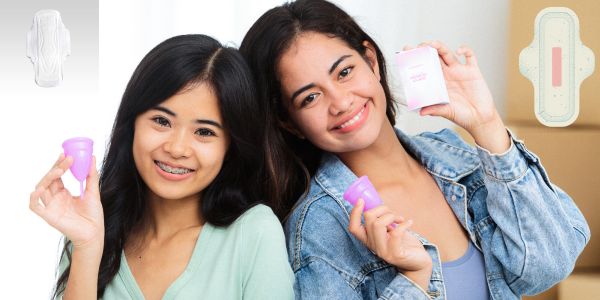India’s girls face a menstrual health crisis. Learn how stigma, cost, and lack of facilities deny dignity, and join the fight for a #PeriodFriendlyIndia in 2025.
Millions of Indian girls face a hidden crisis: menstruation without dignity. In 2025, I’m calling for us to ensure every girl can manage her period with pride, not shame. With a 2024 Dasra forum reporting that 25% of girls and menstruating individuals miss school due to lack of menstrual hygiene resources, it’s time to recognize menstrual health as a fundamental human right. Let’s dive into India’s challenges and rally for a #PeriodFriendlyIndia.
India’s Menstrual Health Crisis in 2024
In India, approximately 336 million people menstruate monthly, but access to proper menstrual hygiene management (MHM) remains a challenge. The 2024 Dasra forum highlighted that 25% of girls miss school due to lack of menstrual products or facilities, impacting their education and future. The National Family Health Survey (NFHS-5, 2019-2021) shows that while 80% of young women aged 15-24 use safe menstrual products, gaps persist, especially in rural areas. Here’s the reality:
- Rural Challenges: NFHS-5 indicates 27% of rural women use unsanitary methods like cloth, increasing health risks. Only 23% of never-married women discuss menstrual hygiene with health workers.
- Prisons: According to the National Crime Records Bureau, 23,772 women are in Indian prisons, with 77% in the reproductive age group (18-50) lacking consistent access to sanitary napkins, as per a 2024 study.
- Urban-Rural Divide: A 2024 study in Scientific Reports found that central Indian districts have the lowest hygienic product use (<65%), while southern states like Tamil Nadu (91%) and Kerala (90%) lead, showing stark disparities.
Poor menstrual hygiene contributes to 10-20% of reproductive tract infections, per WHO estimates, affecting millions of Indian girls and women.
Menstrual Health as a Human Right
I believe menstrual health is about fairness and dignity for every girl. It’s tied to the right to health, education, clean water, and equality. The UN Human Rights Council’s 2024 resolution emphasized that denying menstrual hygiene undermines gender equality, a truth clear in India:
- Health: Lack of hygienic products leads to infections, impacting girls’ physical and mental well-being.
- Education: The 25% of girls missing school due to periods, as per the 2024 Dasra forum, face setbacks in learning and opportunity.
- Dignity: Cultural taboos force girls to manage periods in shame. A 2024 incident in Uttar Pradesh, where a girl took her life due to stress from her first period, shows stigma’s devastating toll.
Menstrual health is a societal issue that demands urgent action in India.
Barriers in India’s Path
Despite progress, India faces hurdles in 2025:
- Cost: Menstrual products are costly. The 2024 feminine hygiene market, valued at USD 0.88 billion, grows at 14.85% annually, yet only 36% of menstruating women use disposable sanitary napkins due to affordability issues.
- Stigma: Menstruation remains taboo. A 2023 The Hindu report cited a tragic Maharashtra case where a brother killed his sister, mistaking her first-period stains for something else, underscoring the need for awareness.
- Infrastructure Gaps: A 2024 WHO/UNICEF report noted that only 31% of schools globally have menstrual waste bins, with India’s central and northern regions lagging. Only 39% of schools provide menstrual health education.
- Policy Implementation: India’s 2024 national menstrual hygiene policy aims to provide free sanitary pads for girls in classes 6-12, but implementation is slow. In Uttar Pradesh, sanitary napkins under the Rashtriya Kishor Swasthya Karyakram (RKSK) went undistributed due to funding issues.
India’s Progress in 2024
India is pushing forward with inspiring initiatives:
- Policy Advances: In November 2023, India formulated a national menstrual hygiene policy to provide free sanitary pads for schoolgirls and ensure separate toilets, as advocated by the Supreme Court in April 2023. States like Andhra Pradesh (Swechcha), Kerala (She Pad), and Odisha (Khusi) distribute subsidized or free pads.
- Sustainable Solutions: In 2024, Kerala and Karnataka distributed 5,000 and 2,300 menstrual cups, respectively, promoting eco-friendly options. Amazon India’s Prayatna initiative, impacting 50,000 women across 130 villages, supports women-run sanitary pad units.
- Destigmatizing Efforts: The 2024 Menstrual Hygiene Day, hosted by Goonj and partners, reached millions in India through the “Chuppi Todi” campaign. The Menstrual Hygiene Alliance India, led by figures like Arundati Muralidharan, drives awareness.
- Market Growth: The sanitary napkin segment dominates 99% of India’s feminine hygiene market, with innovations like Prayatna’s Rs 4.50 pads increasing access.
Must Read: Guide for Indian Students: How to Secure Admission to American Universities
How India Can Lead the Way
I’m convinced India can end period poverty with bold, local action. Here’s how:
- Free Products: Fully implement the 2024 national policy to provide free sanitary pads in schools and public spaces, prioritizing rural areas and prisoners.
- Better Facilities: Invest in school toilets and waste bins, especially in central India, where coverage is below 65%. Ensure all schools offer menstrual health education, currently at 39% globally.
- Educate All Genders: Engage boys and men, as advocated at the 2024 Dasra forum, to break stigma. Programs like Uttar Pradesh’s “Breaking the Silence” show promise.
- Community-Led Solutions: Scale up initiatives like Chhattisgarh’s Pavna program, which boosted sanitary pad use from 40% to 75% in Raigarh by empowering self-help groups (SHGs).
Let’s Make 2025 India’s Year for Menstrual Equity
India’s progress—80% of young women using safe products, a growing market, and a new national policy—is a start, but we can’t stop now. The 25% of girls missing school, the 77% of female prisoners without pads, and the millions facing stigma need our action. I urge you, readers, to demand free products, better school facilities, and open conversations. Support organizations like Goonj, Amazon India’s Prayatna, or the Menstrual Hygiene Alliance. Let’s make 2025 the year every Indian girl manages her period with pride, creating a truly #PeriodFriendlyIndia.
Sources: UNICEF, WHO, Dasra, National Family Health Survey (NFHS-5), National Crime Records Bureau, Menstrual Hygiene Alliance India, India Today, Scientific Reports, World Bank, UN Women

